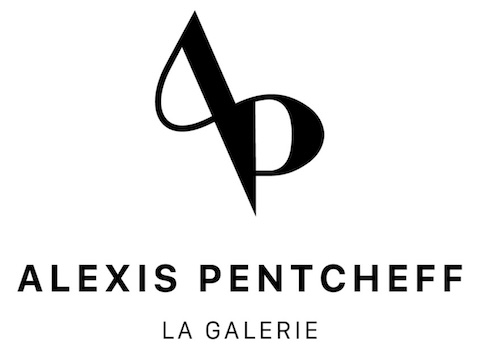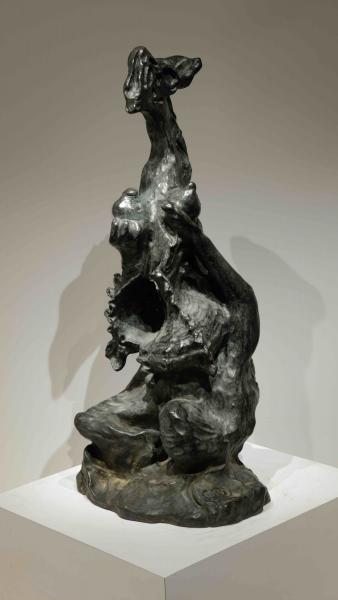HYBRIS, 1964 / 1986-1987
Bronze.
90 x 43.20 cm
Model designed in 1964 and cast in 1986.
Casting Brustolin, Verona, 1986-1987.
Publisher: Due Ci Gallery, Rome.
Second edition of 11 proofs, this one numbered EA2.
Bibliography :
Roger Passeron, André Masson, general catalog of sculptures, Il Quadrante Edizioni, Turin, 1987, model reproduced under n°24 and commented on p. 147 to 150.
André Masson, master works, Galerie H. Odermatt - Ph. Cazeau, Paris, December 1990 - February 1991, reproduced in the exhibition catalog under n°77, p.171.
History according to Roger Passeron p.147:
"This important baroque sculpture is the last of three sculptures made by André Masson at the end of 1964. It represents Hybris who is in Massonian mythology the personification of excess, as André Masson explained to the author of this book in February 1987.
"Hybris was not a goddess, this word must be taken in the ancient sense, that is to say what is excessive. The Greek Hybris, it is all that was excessive. It is thus condemnable. The excess, it is the excess. Exactly the excess. This scared the ancients. It did not seem natural to them and had to be rejected.
- Was there a correspondence of this Hybris sculpture, or even of the Saturn sculpture, in your painting?
- Not directly. But for Hybris, one could perhaps apply it... to all my painting!
It is a real shell of the murex family that Masson incorporated into his original plaster in such a way that there is no solution of continuity with the other parts of his sculpture. This shell - an obvious sexual symbol - is an integral part of the sculpture and does not appear at all as an addition. This is reminiscent of other shellfish in the Pacific Ocean, for example, which permanently attach other shellfish to the surface of their own shell coils as they grow, thus completely transforming their outward appearance into a natural disproportion.
One day in southern Italy, in front of the Tyrrhenian Sea, coming out of the lair of the Sibyl of Cumae, the city founded by the ancient Greeks, André Masson wrote a poem that he entitled Hybris:
Dionysus drunkenness and death
All that precedes him
And all that follows him
There is only oscillation
Fatigue of in-between
All that prowls between dog and wolf
Between the fig and the grape
Between two wines
And all the leaning airs
And a thousand seductions
Of an art of twilight."
Roger Passeron, André Masson, general catalog of sculptures, Il Quadrante Edizioni, Turin, 1987, p.147.

